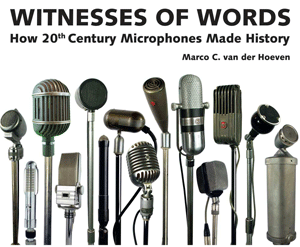|
These days, all vintage ribbon microphones are desirable, not only the ones designed for studio use, and all have become pricey.
One of the niclest of these is Electro-Voice V-1, a very early product, originally meant for PA and communication.
The V-1 was first produced in 1934, just a few years after RCA's first ribbon microphone was launched, and although it was a modest microphone, it was well designed and innovative: it was the first microphone with a humbucking coil *).
A feature first applied by Al Kahn, of Electro-Voice, inspired by a patent for an ancient watt meter, from 1882, which had a balanced winding to cancel hum from stray electrical fields. This novelty gave EV mics an advantage that other cheaper ribbon microphone manufacturers were unable to offer at the time.
This meant that it could be used very close to electrical equipment, where other microphones were impossible to use because of the loud 60Hz hum, induced by electrical currents.
Unlike other ribbon motors, , where the ribbon was suspended between magnet poles, the V-1 had a round magnet at the back, the ribbon itself was mounted between two metal strips that were an integral part of the casing.
The ribbon was broad and long; robust, but the longer the ribbon, the more prone to sagging it became, and thus ready for replacement at EV.
Electro-Voice would market better and more expensive ribbon microphones, larger, but with the same looks; V-2 (heavy duty), V-3 (better specs and also for recording) and the V-4, meant for pro audio recording and broadcast use, but the small V-1 remained popular.
The V-1 and V-1A were high impedance mics, unlike their bigger brothers, that meant they were not suited for studios, but perfect for amateur home use and ham radio.
Somewhere in the early forties the design was updated to the V-1A, with more elegant and even smaller shape and better magnets, for a higher output signal. The customers could choose between a metal gray version, or a slightly more expensive all chrome look.The type shield would stil read V-1, although the technical sheet referred to it as the V-1A. It would remain in production until at least the end of the forties.
Perhaps it was their wonderful art deco design that helped many V-1As to survive, plus their large production number; they are frequently offered on Ebay and Reverb.
*) Humbucking coil: A duplicate coil, not in the signal path, with an inverted phase, will null out the interference that influences both coils, but does not influence the microphone signal. This system was later widely used for electric guitar pick-ups and dynamic microphones.
These and many more types feature in my book Witnesses of Words. More information about that can be found at www.witnessesofwords.com

|
|
|
|
|
Top: the elegant EV V-1A & Ad from 1947
Mid: sound & V-1A parts (photo by Crowley and Tripp)
Bottom: ad for the original V-1, 1937 & spec sheets for EV V1A, V2 and V3
|
|
|
|
 |
 |
|